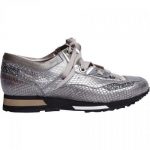Introduction
In recent years, the fashion industry has undergone a significant transformation, with an increasing focus on sustainability and eco-friendliness. As consumers become more environmentally conscious, the demand for eco-friendly products, including shoes, has surged. This article explores the sustainable fashion movement, delving deep into the rise of eco-friendly shoes, the materials and manufacturing processes that make them possible, and the impact of this trend on the fashion industry and the planet.
The Urgency of Sustainable Fashion
Sustainability in the fashion industry has become a pressing concern. The traditional fashion model, characterized by fast fashion and disposable trends, has taken a toll on the environment. Excessive water usage, chemical pollution, and massive waste generation have made the need for sustainable alternatives all the more crucial.
Environmental Impact of Shoes
Footwear production is a major contributor to the fashion industry’s environmental footprint. Leather tanning, synthetic material manufacturing, and transportation of shoes contribute to greenhouse gas emissions, water pollution, and resource depletion.
Consumer Awareness
Consumer awareness of these issues has grown significantly. People are now more informed about the negative consequences of conventional fashion choices, and they are actively seeking eco-friendly alternatives.
Eco-Friendly Materials in Footwear
The development of eco-friendly shoes revolves around the use of sustainable materials. A variety of innovative and environmentally responsible options are emerging.
Recycled Materials
Recycled materials, such as recycled plastic bottles and ocean-recovered plastics, are being used to create uppers, soles, and insoles for shoes. Brands like Adidas and Parley have pioneered the use of ocean plastic in their products.
Organic and Sustainable Fabrics
Organic cotton, hemp, and bamboo are some of the sustainable fabric choices for shoe uppers. These materials are grown without harmful pesticides and are biodegradable.
Alternative Leather
Traditional leather production is resource-intensive and environmentally harmful. Alternative leather materials, such as mushroom leather (mycelium), cork, and pineapple leather (Piñatex), are being embraced as cruelty-free and sustainable options.
Natural Rubber
Sustainably harvested natural rubber is a popular choice for shoe soles. It is biodegradable and less harmful to the environment compared to synthetic rubber.
Vegan and Cruelty-Free Options
Vegan shoes, which are free from animal-derived materials, are becoming increasingly popular. Synthetic materials like microfiber and polyurethane provide a cruelty-free alternative to traditional leather.
Sustainable Manufacturing Processes
Eco-friendly shoes are not only defined by their materials but also by the manufacturing processes used to create them.
Low-Impact Dyeing
Traditional dyeing processes in the fashion industry often involve the use of toxic chemicals. Low-impact or natural dyeing methods reduce the environmental impact and health risks associated with dye production.
Minimal Waste Production
Sustainable shoe manufacturing seeks to minimize waste through efficient pattern making, reducing material scraps, and recycling leftover materials.
Local Production
Local production reduces the carbon footprint associated with transportation. Brands are increasingly opting for local manufacturing to support their sustainability efforts.
Fair Labor Practices
Sustainable fashion extends beyond materials and processes; it also involves fair labor practices. Brands are increasingly committed to providing ethical working conditions and fair wages to their employees.
Sustainable Shoe Brands
Numerous brands have embraced sustainability as a core principle of their operations. These brands offer eco-friendly shoe options for consumers who prioritize both style and the environment.
Allbirds
Allbirds, known for their comfortable wool sneakers, are committed to using sustainable materials like Tencel, eucalyptus, and merino wool.
Veja
Veja is a brand that emphasizes transparency in their production processes. They use organic cotton, wild rubber, and recycled plastic bottles in their sneakers.
Rothy’s
Rothy’s transforms recycled plastic bottles into stylish, machine-washable flats and sneakers.
Toms
Toms is famous for its “One for One” giving model, where a pair of shoes is donated for every pair purchased. They use eco-friendly materials like recycled polyester and sustainable cotton.
Nisolo
Nisolo combines fashion with ethics, producing high-quality, ethically made leather shoes in Peru.
The Impact of Eco-Friendly Shoes
The rise of eco-friendly shoes has far-reaching effects on the fashion industry and the environment.
Reduced Carbon Footprint
By using sustainable materials and manufacturing processes, eco-friendly shoes significantly reduce their carbon footprint compared to conventional footwear.
Conservation of Resources
The use of recycled and sustainable materials conserves natural resources and reduces waste.
Consumer Education
Eco-friendly shoes contribute to increasing consumer awareness about sustainable fashion choices and the broader impact of their purchasing decisions.
Influence on Mainstream Brands
The success and popularity of eco-friendly shoe brands have influenced mainstream fashion companies to incorporate sustainable practices into their operations.
Challenges and Future Trends
While the rise of eco-friendly shoes is promising, the fashion industry still faces challenges in achieving complete sustainability.
Cost Considerations
Sustainable materials and ethical labor practices can increase production costs, which are sometimes passed on to consumers. This can make eco-friendly shoes more expensive.
Mass Adoption
For eco-friendly shoes to make a substantial impact on the fashion industry, they need to be adopted by a larger portion of consumers.
Innovation
Continued innovation in sustainable materials and manufacturing processes is essential to drive progress in eco-friendly footwear.
Regulation and Standards
The fashion industry could benefit from clear regulations and standards for sustainability, helping consumers make informed choices.
Conclusion
The rise of eco-friendly shoes is a testament to the fashion industry’s ability to adapt and embrace sustainability. As consumers become increasingly environmentally conscious, they seek products that align with their values. The use of recycled materials, sustainable fabrics, and ethical manufacturing processes in eco-friendly shoes is not only a step toward reducing the industry’s environmental impact but also a powerful statement about the importance of sustainable fashion. The continued growth of the eco-friendly shoe movement indicates that sustainable fashion is not just a trend but a lasting change in the industry, one that benefits both consumers and the planet.
















Add Comment